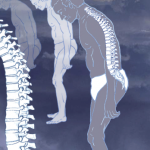“At least 30 genes are associated with increased risk for axial SpA; HLA-B27 is the most important,” said Dr. Khan. “The newly described entheseal-resident naïve T cells, when activated by interleukin 23 (IL-23), can promote pathogenesis characteristic of spondyloarthritis. This has provided potential for new therapeutic approaches.”
He also said that ustekinumab (generic for Stelara), a monoclonal antibody that targets the common p40 subunit of IL-12 and IL-23, has been approved for the treatment of psoriasis and psoriatic arthritis. Moreover, a proof of concept open-label study (TOPAS) of 20 active axial SpA patients showed a 65% ASAS40 response (the primary study endpoint) at week 24.
Bone Erosion & Repair in RA
Ellen Gravallese, MD, chief of the Division of Rheumatology at the University of Massachusetts Medical School, said a growing understanding of bone erosion and repair in RA holds promise for better treatment approaches.
Her lab has been studying the effects of TNF alpha in bone remodeling.
“We’ve been thinking about the balance of resorption and formation and realizing that when bone is resorbed, what’s supposed to happen is osteoblasts are supposed to come in and make bone and fill in that area that’s been resorbed,” she said. “And it turns out that the proinflammatory cytokines, in particular TNF alpha, are inhibitory to this process. … There are a number of ways that TNF can regulate bone resorption independent of its effects on inflammation.”
Denosumab, which inhibits osteoclast differentiation by blocking RANK ligand, curbs bone erosion significantly, but presents an issue with “bone turnover,” she noted. “If you block resorption of bone really effectively, you also block formation of bone, because the two are coupled,” she said. “What you’d really like to do is block resorption in favor of formation.”
A potentially better alternative is cathepsin K inhibitors, which don’t block formation of osteoclasts, but rather their function. This means that this interruption of the bone turnover process isn’t a concern. These are now in Phase 3 trials.
Combinations of agents that block bone resorption, coupled with an anabolic agent, are probably going to get more attention in the future, she said. “This actually seems to be more effective than either agent alone.”
The role of inflammation in the repair of bone has also been generating increasing attention, she said. It’s not common that bone erosion-healing occurs; it’s only seen in about 10% of cases, but when it does occur, it’s usually at times of low disease activity.
